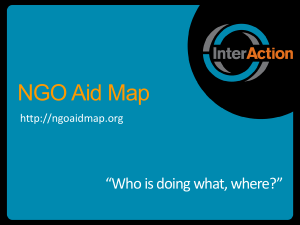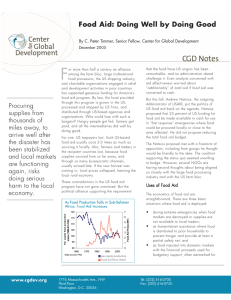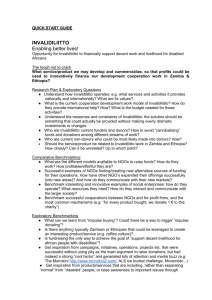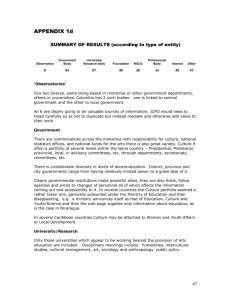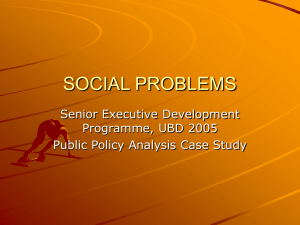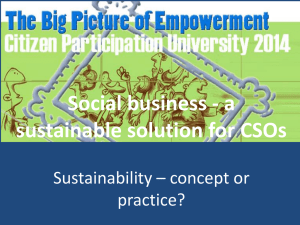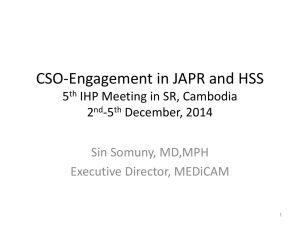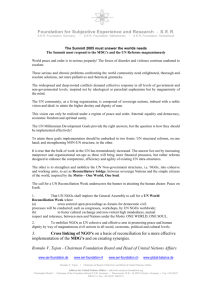Powerpoint slides
advertisement
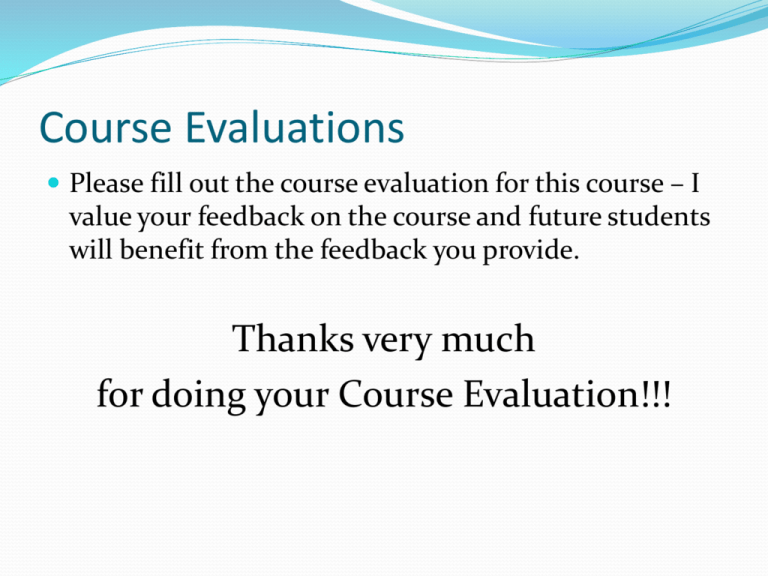
Course Evaluations Please fill out the course evaluation for this course – I value your feedback on the course and future students will benefit from the feedback you provide. Thanks very much for doing your Course Evaluation!!! Final Exam – Takehome Question International organization involves efforts by states to resolve the problems they face. Select TWO (2) examples of international problems, 1 from each of 2 different issue areas: security, international political economy, human rights, and environment. Describe differences and similarities between your two examples in terms of a) their problem structures, b) how those problems influence the international institutions states create, and c) how both of those sets of factors influence the effectiveness of those institutions. Write a well-structured and coherent essay that uses the theories, concepts, analytic techniques, and evidence from readings & lectures. PS420 Pre-Test 20 minutes // 5 minutes per question *May* use progress from start-of-term Pre-Test to end- of-term Post-Test as part of grade Get out sheet of paper Put name on it PS420/520 Pre-Test 20 minutes / 5 minutes each Problem Structure: What types of problems do countries face that require international cooperation? Describe at least two different kinds of problems that countries face. Institutional Design: Why is it hard for countries to cooperate internationally? What types of international institution do countries create to promote such cooperation? Describe at least two different kinds of institutions that countries create. If possible, identify how problems and solutions “go together.” Institutional Effects: How do we know an international institution has been effective? Identify 3 types of factors that make one institution “work” while another one fails. Issue Area Differences: Name at least three issue areas in which countries seek to cooperate internationally. Do the answers to the previous questions differ across these issue areas? Effectiveness and Counterfactuals Observe certain outcome Generate counterfactuals that try to match everything except the regulation being in place. So, try to control for: Characteristics of country Characteristics of activity involved Characteristics of context, i.e., international environment Note, these are same as Jacobson/Brown Weiss Institutional dynamics: how institutions change over time Institutions change and adapt Change in problem structure Expand their scope, e.g., EU, GATT/WTO, Improve design, e.g., oil pollution, ozone Institutional resilience depends on being able to adapt to new circumstances Processes of change: organic, negotiated, imposed Internal (endogenous) vs. external (exogenous) change Institutional interplay, linkage, overlap, and complexes Institutions exist in relationship to other institutions Human rights and environment conventions Interplay among various trade institutions Clustered institutions/regimes Sources of problems often overlap so often need coordination of institutions Take advantage of synergies and avoid redundancies and conflicts Alternatives to International Agreements Industry self-regulation Coordination between NGOs and corporations Transparency International working on bribery codes NGOs working with MNCs for human rights and environmental regulation Selective self-regulation: “coalition of the willing,” others may follow “Islands of integrity” with respect to bribery Green nations move first Regulation by information / disclosure Transparency International actions Human rights NGOs Direct action partnerships and networks Debt for nature swaps among banks, governments, and NGOs NGOs working with corporations to provide drugs in various countries Problem Structure and Institutional Effectiveness HARDER problems less likely to be effective Easy: COORDINATION: Big effect on shallow problems EPISTEMIC: pooling informational resources that are cheap AND states have interests in pooling Medium: UPSTREAM/DOWNSTREAM: hard to resolve but structure generates careful rules that make likely to succeed PEPI: structure leads to careful rules that tend to be “incentive-compatible” Hard group: COLLABORATION: all have incentives to contribute AND cheat NORMATIVE problem: changing norms is very hard Problem Structure and Institutional Effectiveness Inherent transparency LESS inherent transparency, more likely institution will NOT be effective Response incentives LESS violation tolerance, more likely institution WILL be effective STRONGER response incentives, more likely institution WILL be effective Institutional Design and Institutional Effectiveness Institutional type: Procedural/programmatic – regulatory – generative Membership: more states, LESS effective Primary rule system MORE specific, MORE effective Common MORE effective than Differentiated (??) Information system: clearer, MORE effective Response systems: Facilitative, MORE effective than Clear/specific MORE effective

